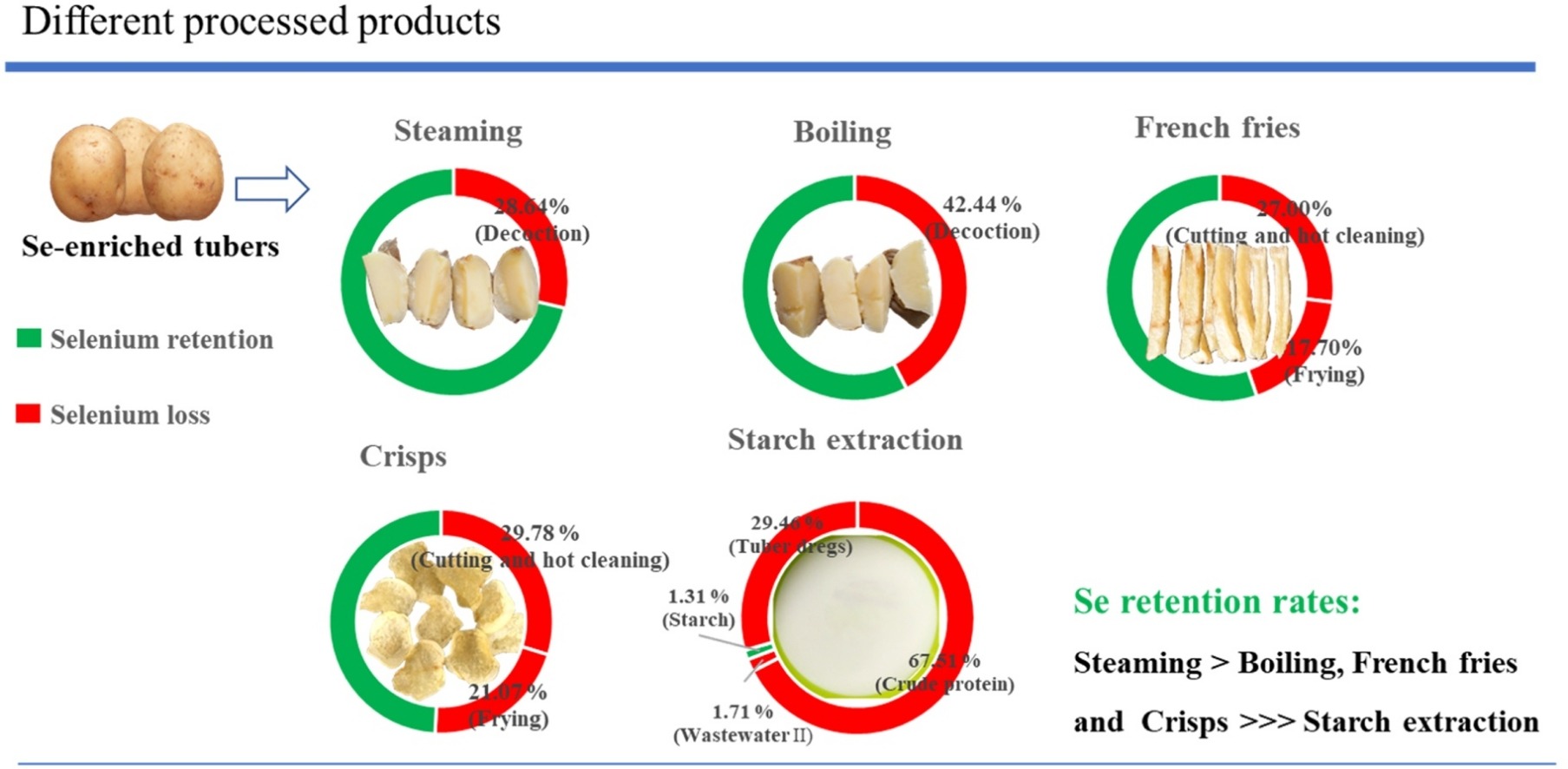Selenium loss and changes in product quality during cooking of selenium enriched potato tubers
Haiqing Zhang Journal of Food Composition and Analysis Volume 96, March 2021,
Highlights
• Selenium loss details was clarified during cooking of Se-enriched tubers.
• Steaming resulted in the lowest selenium loss rate, followed by boiling and frying.
• Selenium was almost completely lost after starch extraction.
• Selenium application increased the diameter of starch granules.
Selenium biofortification is increasingly applied to improve selenium contents in the edible parts of crops. Potato (Solanum tuberosum L.) is a major food crop with wide availability of consumption, which is suitable for selenium biofortification. However, the processing and product quality of selenium-enriched potatoes has rarely been reported. Herein, selenium-enriched potato tubers (0.24 mg kg−1 fresh weight) were used to investigate selenium retention, loss details, and quality changes in different processed products.
Final selenium contents of the products varied with different processing methods (P <0.01). Compared to fresh tubers, steaming resulted in the lowest loss rate of selenium (28.64 %), mainly related to decoction. Moderate loss rates of selenium were recorded in boiled tubers (42.44 %), French fries (44.73 %), and crisps (50.86 %), mainly related to decoction, cutting and hot cleaning, respectively.
The highest loss rate was attributed to starch extraction (98.69 %), mainly related to crude protein. Selenium application delayed enzymatic discoloration of fresh-cut tubers (P < 0.05) and increased the proportion of large- to medium-sized starch granules (>30 μm) (P < 0.05) compared to the control. To minimize selenium loss, steaming is superior to boiling and frying for the processing of selenium-enriched potatoes, and it is not feasible to produce selenium-enriched starch.














